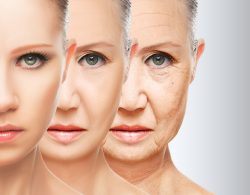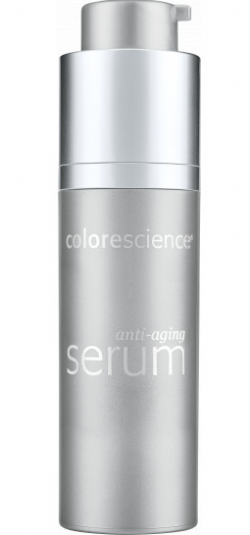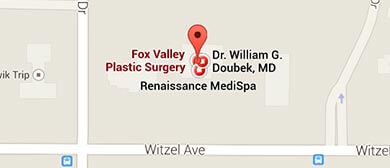
 We used to think that SPF was your best weapon in the fight against aging. It may not be. New research shows that antioxidants in skin care may have sunscreen beat.
We used to think that SPF was your best weapon in the fight against aging. It may not be. New research shows that antioxidants in skin care may have sunscreen beat.
You wear sunscreen daily. According to the US Environmental Protection Agency, up to 90 percent of preventable aging is caused by UV exposure. That means smoking, diet, and sleep barely matter by comparison. For the last few decades, everyone from dermatologists to beauty editors has been stressing the importance of SPF. “Wear sunscreen and you’ll look younger” has been the motto.
But here’s the thing: We were wrong. SPF is not enough to protect you from sun damage. Sunscreens block UVA and UVB rays, but those rays only account for seven percent of solar energy. New research finds that infrared radiation, which makes up 54 percent of solar energy, also causes aging. It might even be worse than UV rays. While there is no product that can totally guard you from infrared radiation, studies show that antioxidants in skin care may help.
 More and more dermatologists and skin care experts now recommend wearing an antioxidant serum and a sunscreen — and many of them believe the antioxidant is the more important half of the duo. “I rarely wear sunscreen anymore,” said Stuart Leitch, assistant vice president of marketing at SkinCeuticals, while sitting at a table of shocked beauty editors. “I get more protection from my antioxidant serum.”
More and more dermatologists and skin care experts now recommend wearing an antioxidant serum and a sunscreen — and many of them believe the antioxidant is the more important half of the duo. “I rarely wear sunscreen anymore,” said Stuart Leitch, assistant vice president of marketing at SkinCeuticals, while sitting at a table of shocked beauty editors. “I get more protection from my antioxidant serum.”
Leitch explained that he does wear SPF when he knows he’s going to be outside — and most dermatologists still suggest sticking with the combination of an antioxidant serum followed by a sunscreen. The problem, however, is that most patients skip that antioxidant step because there’s so much confusion about antioxidants: What are they? What do antioxidants do? Does it matter which one you choose? We’re answering these questions and more — because adding an antioxidant to your skin care regimen might just be the most important thing you do to fight aging.
The “New” Kind of Sun Damage
This is the scary part. You probably know about UVA and UVB rays — and that broad-spectrum sunscreens will protect you against both. UVA rays are responsible for aging — they break down collagen and elastin, which keep your skin looking young. UVB rays damage the top layers of your skin, causing sunburn. Both UVA and UVB can cause skin cancer.
However, these rays make up only seven percent of solar energy. What makes up the rest? We won’t bore you with a scientific dissertation about wavelengths, but here’s what you need to know: New research shows that infrared radiation A (IRA) penetrates even deeper into the skin than UVA rays. It damages skin cells and causes sun damage and aging by producing free radicals, as explained in the paper, “Sun Protection Should Protect From IRA Damage,” (May 2012) by Nadim Shaath, PhD, chairman of chemistry at SUNY-Purchase. Why are free radicals so bad?
What Are Free Radicals?
 Infrared radiation damages your skin by producing free radicals. “A free radical is an unstable oxygen molecule with an uneven number of electrons,” explains Miami dermatologist Leslie Baumann, MD. “These free radicals are looking to steal electrons from your cells in order to complete themselves, and the result is damage to the cells in the form of inflammation, pigmentation, and even DNA damage.” Basically, free radicals are the enemy — the more they accumulate in our skin, the more they damage our healthy cells, and the faster we age. Antioxidants are the best-known way to neutralize those free radicals before they start attacking our healthy cells.
Infrared radiation damages your skin by producing free radicals. “A free radical is an unstable oxygen molecule with an uneven number of electrons,” explains Miami dermatologist Leslie Baumann, MD. “These free radicals are looking to steal electrons from your cells in order to complete themselves, and the result is damage to the cells in the form of inflammation, pigmentation, and even DNA damage.” Basically, free radicals are the enemy — the more they accumulate in our skin, the more they damage our healthy cells, and the faster we age. Antioxidants are the best-known way to neutralize those free radicals before they start attacking our healthy cells.
How Antioxidants Work
If free radicals are your enemies, then antioxidants are your heroes. “Antioxidants provide the missing electron so the [free radical] molecules don’t try to take them from your skin,” says Baumann, who suggests using an antioxidant serum that’s a combination of vitamin C, vitamin E, and ferulic acid. “The vitamin E helps stabilize the vitamin C, and ferulic is an antioxidant as well as a sunscreen,” she says.
Why a Sunscreen with Antioxidants Isn’t Enough
 Dermatologists like Baumann and Steven Wang, MD, of Memorial Sloan Kettering Cancer Center, agree that antioxidants in sunscreen don’t do much. Many antioxidant ingredients are unstable, meaning they don’t work very well after they’re exposed to light and air (something that’s pretty much inevitable with sunscreen). Even if the antioxidants in sunscreen don’t oxidize, it’s hard for them to do their job when they’re basically drowning in SPF ingredients. If you’re trying save time, this isn’t the right place to multitask. “You absolutely need to use an antioxidant serum underneath your sunscreen,” says Baumann. “Sunscreens actually produce free radicals, so you need the serum to counteract that.”
Dermatologists like Baumann and Steven Wang, MD, of Memorial Sloan Kettering Cancer Center, agree that antioxidants in sunscreen don’t do much. Many antioxidant ingredients are unstable, meaning they don’t work very well after they’re exposed to light and air (something that’s pretty much inevitable with sunscreen). Even if the antioxidants in sunscreen don’t oxidize, it’s hard for them to do their job when they’re basically drowning in SPF ingredients. If you’re trying save time, this isn’t the right place to multitask. “You absolutely need to use an antioxidant serum underneath your sunscreen,” says Baumann. “Sunscreens actually produce free radicals, so you need the serum to counteract that.”
You see, not only do you have to fight the free radicals formed by infrared radiation, but chemical SPF ingredients like Avobenzone and Octinoxate also produce free radicals when they absorb UV rays. This means certain sunscreens may cause more wrinkles than they prevent. If you want to avoid free radical-producing sunscreens completely, look for physical (also called mineral) sunscreen ingredients, like zinc and titanium dioxide.
Look Out for “Antioxidant-Washing”
 As eco beauty products grow in popularity, “green washing” has become a hot topic. Companies have been known to make a product appear natural when it’s loaded with preservatives and harmful chemicals. Now, there are similar marketing lies happening with antioxidants. Ingredients like green tea and vitamin C are being added to everything from moisturizers to hair masks. That’s not to say that they don’t have some benefits — for example, both green tea and vitamin C can help reduce inflammation — but don’t assume that they’re going to protect you from sun damage.
As eco beauty products grow in popularity, “green washing” has become a hot topic. Companies have been known to make a product appear natural when it’s loaded with preservatives and harmful chemicals. Now, there are similar marketing lies happening with antioxidants. Ingredients like green tea and vitamin C are being added to everything from moisturizers to hair masks. That’s not to say that they don’t have some benefits — for example, both green tea and vitamin C can help reduce inflammation — but don’t assume that they’re going to protect you from sun damage.
When you’re choosing an antioxidant to wear underneath your sunscreen, opt for five to six drops of serum, and let it absorb completely before applying your sunscreen. Baumann suggests looking for a combination of vitamin C, vitamin E, and ferulic acid, and says the vitamin C and E pairing is key — the E helps to stabilize the C and give it a longer shelf life. And the rule of thumb according to most derms is to pick a product that contains more than one antioxidant ingredient.
Other Ways to Get Antioxidants
Baumann suggests incorporating antioxidants into your life in as many ways as possible. She recommends taking a coenzyme Q10 supplement in the morning, incorporating antioxidant-rich foods like raspberries and blueberries into your diet, and using an antioxidant-infused body lotion.
What Antioxidants Don’t Do
 Now that we have you thinking that antioxidants are the anti-aging miracle you’ve been looking for, here’s the bad news: Antioxidants help prevent aging, but they don’t do anything to get rid of the wrinkles you already have. “I think people throw antioxidants into a category with retinol and peptides,” says Baumann. “But they work very differently than those ingredients. Antioxidants help prevent the breakdown of elastin.” Meanwhile, retinols speed up cell turnover, and peptides tell your skin to make more collagen. Bottom line: Remember to use an antioxidant serum underneath your sunscreen every day — it might just be what keeps you looking young.
Now that we have you thinking that antioxidants are the anti-aging miracle you’ve been looking for, here’s the bad news: Antioxidants help prevent aging, but they don’t do anything to get rid of the wrinkles you already have. “I think people throw antioxidants into a category with retinol and peptides,” says Baumann. “But they work very differently than those ingredients. Antioxidants help prevent the breakdown of elastin.” Meanwhile, retinols speed up cell turnover, and peptides tell your skin to make more collagen. Bottom line: Remember to use an antioxidant serum underneath your sunscreen every day — it might just be what keeps you looking young.
This article was excerpted from Dawn Davis of Total Beauty.


Oshkosh, WI (920) 233-1540